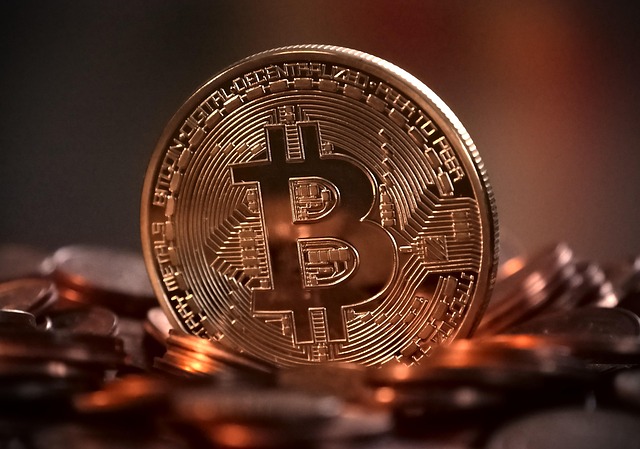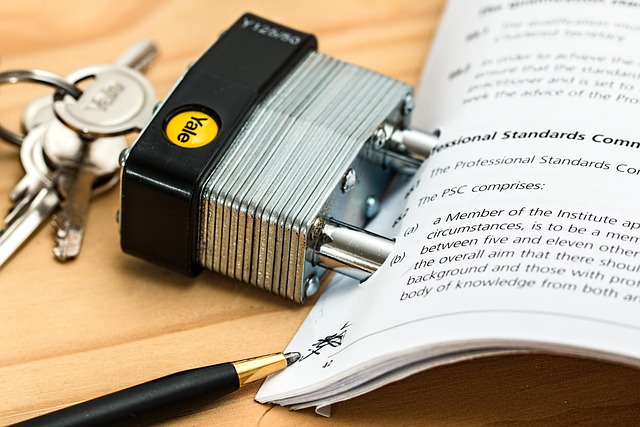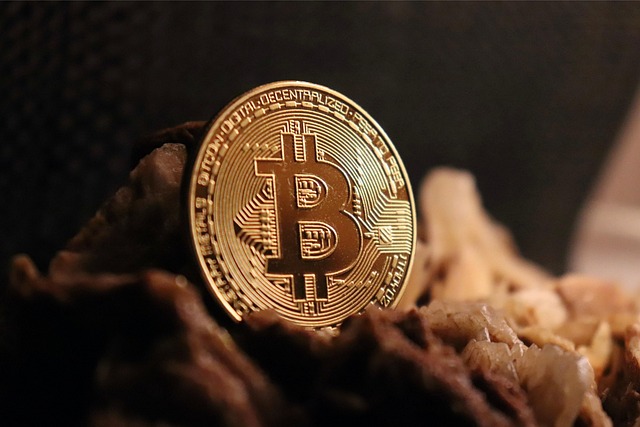Astar reduces base staking rewards to curb inflation pressure
Blockchain firm Astar Network implemented changes to its tokenomics to reduce inflationary pressures in its ecosystem. On April 18, Astar Network announced that it reduced the blockchain’s base staking rewards to 10% from 25% to curb token inflation. The company said the change promotes a more stable annual percentage rate (APR) for users as staking inches closer to a more ideal ratio. The firm said this ensures that rewards “remain meaningful” without causing excessive inflation. “This change lowers automatic token issuance, reducing overall inflationary pressure while maintaining strong incentives for users to stake their ASTR,” Astar Network wrote. Astar Network highlights key changes to its tokenomics. Source: Astar NetworkAstar Network implements inflation-control mechanismsUnlike Bitcoin, which has a fixed total supply, the ASTR token operates under a dynamic inflation model without a cap on its maximum token supply. As the blockchain operates, it emits more tokens, increasing the supply. Having no fixed supply can often create downward pressure on the token’s value over time. This is especially true if the demand for the token does not keep up. To address this, Astar is introducing several new inflation-control mechanisms.Apart from lowering staking rewards, Astar also started routing token emissions into a parameter that governs total value locked (TVL)-based rewards like decentralized application staking. This means that DApp staking APRs will become “more predictable” over time, offering stability to stakers. Astar also introduced a new minimum token emission threshold of 2.5% to ensure it doesn’t exceed a sustainable baseline. With continued transaction fee burning, Astar said it would also contribute to reward predictability. According to Astar, the changes have already lowered its annual inflation rate from 4.86% to 4.32%. It also lowered its total ASTR token emitted per block from 153.95 to 136.67 tokens. This reduces the token’s estimated annual emissions by 11%, going from 405 million to 360 million. Related: Sony’s Soneium taps EigenLayer to cut finality to under 10 secondsAstar token hits all-time low on April 7Astar Network’s efforts to curb token inflation come as its native token recently hit an all-time low. CoinGecko data shows that on April 7, the ASTR token declined to a new low of $0.02. The price is 93.8% lower than its peak three years ago, when it reached $0.42 on Jan. 17, 2022. In December 2024, the token rallied along with the rest of the market, hitting a high of $0.09. Since then, the crypto asset had continuously dropped in value before hitting the new all-time low. Astar Network’s 1-year price chart. Source: CoinGeckoMagazine: Uni students crypto ‘grooming’ scandal, 67K scammed by fake women: Asia Express
Spar supermarket in Switzerland starts accepting Bitcoin payments
Global grocery giant Spar has rolled out Bitcoin-based payments in a Swiss city, marking another step in the growing adoption of cryptocurrency for everyday transactions.A Spar supermarket in Zug, Switzerland, has implemented Bitcoin (BTC) payments via the Lightning Network.The store’s Bitcoin payments went live on BTC Mao, a community-driven project highlighting stores that accept BTC payments, DFX Swiss, a crypto-to-fiat payment solution firm, announced in an April 17 LinkedIn post.“This SPAR location is among the first supermarkets in Switzerland where you can pay directly at the checkout using Bitcoin (via LNURL), thanks to our new hashtag#OpenCryptoPay solution, an open P2P standard for in-person crypto payments,” DFX said.Spar in Zug adopts Bitcoin payment, announcement. Source: DFX SwissSwitzerland has long been regarded as one of the more crypto-friendly European jurisdictions with some of the earliest crypto-adoption initiatives.In 2023, the Swiss city of Lugano adopted Bitcoin and Tether USDt (USDT) payments for all municipal fees, one of the world’s first city administrations to do so.There are currently 1,013 stores and businesses accepting Bitcoin payments in Switzerland, according to BTCmap data.Businesses accepting Bitcoin payment in Switzerland, Europe. Source: BTCmapRelated: ‘Bitcoin Standard’ author to develop Austrian economics curriculum for UK schoolBitcoin adoption among retail giants with a global presence may increase mainstream trust in cryptocurrency payments.Spar operates over 13,900 stores across 48 countries, with over 14.7 million daily shoppers and 450,000 employees worldwide.Related: Crypto, stocks enter ‘new phase of trade war’ as US-China tensions riseSpar in Zug enables seamless Bitcoin payment via QR codeFriction points and complicated user experience are often criticized as some of the biggest hurdles limiting mainstream blockchain adoption.However, Spar’s Bitcoin implementation enables easy payments by scanning a simple quick-response (QR) code, according to Rahim Taghizadegan, a university lecturer and director of Bitcoin Association Switzerland.In an April 16 LinkedIn post, he outlined how simple it is to pay using BTC in Spar:“Just scan a static QR code, send sats, immediate and easy registration by the cashier. If enough people use it, it may be rolled out in the whole country. ““I used Phoenix Wallet for [the Lightning Network], but pretty much anything works,” he added.Bitcoin payment in Spar, Zug, Switzerland. Source: Rahim TaghizadeganIncreasingly more companies are adopting cryptocurrency in the country. Switzerland-based blockchain ecosystem Crypto Valley surpassed $593 billion in valuation in 2024 after a 55% yearly increase, Cointelegraph reported on Jan. 21.Crypto Valley Unicorns. Source: CvVc.comAmong the 50 regional entities, 17 have reached unicorn status, with a $1 billion or more valuation.“A Swiss industry where the Top 50 entities share a valuation of $593 billion and whose funding medians exceed global medians reflects vision and resilience,” Mathias Ruch, founder and CEO of CV VC, told Cointelegraph.Top 50 projects in Crypto Valley. Source: CvVc.comSome of Crypto Valley’s well-known projects include the layer-1 (L1) blockchain network Ethereum, Cardano and the Casper blockchain.Magazine: BTC’s ‘reasonable’ $180K target, NFTs plunge in 2024, and more: Hodler’s Digest Jan 12 – 18
Yemenis are turning to DeFi as US sanctions target Houthi group
Yemeni citizens are increasingly using decentralized finance (DeFi) protocols to bank themselves amid US sanctions aimed at the Houthi group, which they have deemed a terrorist organization. In the past, internet infrastructure challenges and low financial literacy among the war-torn population contributed to relatively limited crypto adoption, according to an April 17 report from blockchain intelligence firm TRM Labs.“However, there are signs of growing interest and usage driven primarily by necessity rather than speculation,” the blockchain intelligence firm said. “For those who use cryptocurrencies in Yemen, the ability to bypass the disruption in local financial services offers a modicum of financial resilience, especially as banks can be difficult to access or are simply inoperable due to the ongoing conflict.” Yemen has been in a civil war between the government and the Houthi group since September 2014. The US has also frequently sanctioned financial infrastructure in the country to disrupt Houthi activity, with the most recent action on April 17 hitting the International Bank of Yemen.DeFi platforms account for most of Yemen’s crypto-related web traffic, taking up over 63% of observed activity, while global centralized exchanges account for 18% of crypto-related web traffic, TRM Labs data shows.DeFi platforms account for most of Yemen’s crypto-related web traffic, followed by centralized exchanges. Source: TRM LabsSome local Yemenis also use peer-to-peer crypto transactions to move funds across borders or conduct remittances.“Although these interactions do not necessarily imply high transaction volumes, they reinforce that for some individuals in Yemen, decentralized infrastructure may provide a necessary alternative to traditional payment rails,” TRM Labs said.“The interest in DeFi services may reflect the appeal of systems that allow users to transact without intermediaries, particularly where local banking institutions are inaccessible or unreliable.” Increasing sanctions could spark higher crypto adoption in Yemen Currently, Yemen doesn’t have legislation in place for the use of crypto; TRM Labs speculates that increasing sanctions against the Houthis could be the spark that ignites higher crypto adoption in Yemen.Following the Biden administration’s relisting of the Houthis as a Specially Designated Global Terrorist in January 2024, a Yemen-based cryptocurrency exchange tracked by TRM experienced a 270% increase in overall volume, the blockchain intelligence firm said. Related: US DOJ says it seized Hamas crypto meant to finance terrorismIt eventually returned to pre-spike levels, but it saw another uptick again, this time by 223%, in the three months following the election of US President Donald Trump and the reinstating of the Houthis as a foreign terrorist organization by the US on Jan. 22. “Given the intensifying international sanctions on the Houthis and their primary backer, Iran, the group’s use of cryptocurrency is likely to grow in both scale and sophistication,” TRM Labs said. “As traditional financial avenues become increasingly restricted, decentralized digital currencies offer an alternative that is less susceptible to oversight and harder to trace.” Magazine: Terrorism and the Israel-Gaza war have been weaponized to destroy crypto
Kyrgyzstan’s president signs CBDC law giving ‘digital som’ legal status
Kyrgyzstan President Sadyr Zhaparov has signed a constitutional law authorizing the launch of a central bank digital currency pilot project while also giving the “digital som” — the national currency in digital form — legal tender status.The law gives the National Bank of the Kyrgyz Republic the exclusive right to issue the digital som, establish the rules for its issuance and circulation, and oversee the platform on which the national currency will operate, Kyrgyzstan’s presidential office said on April 17.However, a final decision on whether to officially issue the CBDC is not expected until the end of 2026, local outlet Trend News Agency reported in December.If the central bank decides to adopt the digital som, it would also need to outline cryptographic protection measures to ensure the digital som remains secure and isn’t used for fraudulent transactions.Testing of the digital som platform is expected to take place sometime this year.Zhaparov’s sign-off comes nearly a month after Kyrgyzstan’s parliament, the Jogorku Kenesh, approved the amendment to Kyrgyzstan’s constitutional law on March 18.CBDCs continue to be heavily criticized by some members of the crypto community, flagging concerns that they could undermine financial privacy and enable excessive government oversight, among other things.While 115 nations have initiated CBDC projects, only four CBDCs have officially launched — the Bahamas Sand Dollar, Nigeria’s e-Naira, Zimbabwe’s ZiG and Jamaica’s JAM-DEX, data from cbdctracker.org shows.Over 90 CBDC projects are yet to move past the research stage.Kyrgyzstan continues to make moves in cryptoEarlier this month, former Binance CEO Changpeng “CZ” Zhao said he would begin advising Kyrgyzstan on blockchain and crypto-related regulation after signing a memorandum of understanding with the country’s foreign investment agency.Zhaparov said the initiative would assist with the growth of the economy and the security of virtual assets, “generating new opportunities for businesses and society as a whole.”Source: Sadyr ZhaparovRelated: Bitcoin price levels to watch as Fed rate cut hopes fadeThe mountainous, land-locked country is considered well-suited for crypto mining operations due to its abundant renewable energy resources, much of which is underutilized.Over 30% of Kyrgyzstan’s total energy supply comes from hydroelectric power plants, but only 10% of the country’s potential hydropower has been tapped, according to a report by the International Energy Agency.Magazine: Your AI ‘digital twin’ can take meetings and comfort your loved ones
Huaxia to add staking to Ether ETF, Hong Kong’s second of its kind
Huaxia Fund is set to launch staking services on its Ether exchange-traded fund (ETF), making it the second in Hong Kong. OSL Digital Services (OSL) will provide custody and staking infrastructure for the fund.The staking feature will be live on May 15, moving the ETF from a strictly passive investment vehicle to an “active participant” in the Ethereum ecosystem, according to the announcement from OSL. Huaxia Fund, a subsidiary of China Asset Management (ChinaAMC), first launched its Ether ETF in April 2024. The introduction of a staking provision comes after Hong Kong’s Securities and Futures Commission (SFC) changed its rules on April 7 to allow for entities like centralized exchanges to offer crypto staking in a bid to position the city as a leader in Web3. When announcing the rule change, the SFC said it “recognizes the potential benefits of staking in enhancing the security of blockchain networks and allowing investors to earn yields.”Related: Hong Kong Bitcoin, Ether ETFs attract over $200M on day 1Staking is the process of locking up crypto tokens to help support the operations and security of a blockchain network. In return, participants earn rewards, typically in the form of more cryptocurrency.On April 10, Bosera HashKey was approved to be a staking provider in Hong Kong, the first under the new rule. According to a press release, staking will allow for Bosera HaskKey’s Ether ETF to take advantage of compound growth, as yield from the staked Ether can be reinvested into the financial instrument. According to Coinbase, ETH stakers are currently earning about 2.14% of their holdings in a 365-day average. 30-day ETH staking yield as of April 13. Source: Dune AnalyticsHong Kong changes rules to become Web3 hubStaking for Ether ETFs has been a central topic in the United States. In December 2024, Bernstein Research predicted that staking would be approved for Ether ETFs under the crypto-friendly Trump administration. Since then, CBOE and the NYSE have filed for a rule change with the United States Securities and Exchange Commission (SEC) to grant permission for staking in such funds.Asset manager BlackRock has remarked that while successful, ETH ETFs are less perfect without staking. Staking is seen as a way to attract more investors to the Ether ETFs, who may be lured by the possibility of yield, which leads to further gains.Related: Ether shoots up 3.5% as CBOE, 21Shares seek to add ETH staking to ETFHong Kong’s SFC appears to understand that and is acting accordingly. Chen Wu, the CEO of Hong Kong-based crypto exchange Ex.io, told Cointelegraph. “The SFC’s announcement signals that more doors are opening — not just for staking, but for a wider range of Web3 products to take shape under a regulated and trusted framework,” she said.Hong Kong has seen a 250% growth in its blockchain sector since 2022, with the city’s fintech market expected to reach over $600 billion by 2032. The Hong Kong government is considered to have proactive policies for cryptocurrency companies, a stark contrast to the sometimes combative tone other governments take to the emerging asset class.Magazine: What are native rollups? Full guide to Ethereum’s latest innovation
How Mantra’s OM token collapsed in 24 hours of chaos
Mantra’s OM token collapsed by more than 90% overnight, and the crypto world can’t agree on why. On April 13, OM’s price plummeted from over $6 to below $0.50, wiping out more than $5 billion in market cap and triggering widespread panic across the crypto industry.The sudden crash drew comparisons to Terra’s LUNA implosion as traders scrambled for answers. Unverified rumors of insider dumping, forced liquidations, mislabeled wallets and exchange manipulation quickly spread — but Mantra insists it was caught in the middle.Mantra had built a strong position in the real-world asset tokenization narrative heading into April 13, backed by a $1-billion deal to tokenize Dubai-based Damac Group’s real estate and data centers. It secured a Virtual Assets Regulatory Authority (VARA) license in Dubai and launched a $108-million ecosystem fund with support from heavyweights such as Laser Digital, Shorooq, Amber Group and Brevan Howard Digital. In February 2025, the OM token hit an all-time high of nearly $9.But on April 13, that momentum was violently interrupted. The hours that followed painted a messy picture of token transfers, insider speculation and shifting blame. Here’s a detailed look at how the OM collapse played out.24 hours of the Mantra OM fiascoApril 13 (16:00–18:00 UTC)Mantra’s OM token was trading sideways throughout the day. It dropped from $6.14 to $5.52 during this two-hour window.April 13 (18:00–20:00 UTC)The token suddenly fell to $1.38 in the first hour, then to as low as $0.52 in the next — losing over 90% of its value in a single day. Social media erupted with theories, including a rug pull, insider dumping, forced liquidation or exchange manipulation.Mantra’s OM loses over 90% of its value in just a few hours. Source: CoinGeckoApril 13 (20:00–22:00 UTC)Early speculation surrounded a rug pull, sparked by a screenshot of a deleted Telegram channel. This was later debunked, as the deleted group was not Matra’s official channel. Cointelegraph has confirmed that the project’s Telegram is active at the time of writing.Mantra shared its first statement on X, but the brief update was met with immediate backlash from the community.Mantra says OM’s crash was due to “reckless liquidations.” Source: Mantra/ExyApril 13 (22:00–00:00 UTC)Mantra co-founder and CEO John Patrick Mullin posted a more detailed statement on X, claiming OM’s market action was triggered by “reckless forced closures initiated by centralized exchanges on OM account holders.”“The timing and depth of the crash suggest that a very sudden closure of account positions was initiated without sufficient warning or notice,” Mullin said.“That this happened during low-liquidity hours on a Sunday evening UTC (early morning Asia time) points to a degree of negligence at best, or possibly intentional market positioning taken by centralized exchanges.”Related: Atkins becomes next SEC chair: What’s next for the crypto industryApril 14 (00:00–02:00 UTC)In the days leading up to the crash, at least 17 wallets had deposited a total of 43.6 million OM (worth $227 million) into Binance and OKX, according to blockchain tracker Lookonchain.Two of these wallets were labeled as belonging to Laser Digital, a strategic Mantra investor, by blockchain data platform Arkham Intelligence. The label triggered further speculation and allegations against Laser Digital. At the time of writing, the accuracy of Arkham’s labels has not been confirmed, and the platform has not responded to Cointelegraph’s request to clarify.Laser Digital is still tagged on Arkham’s platform. Source: Arkham IntelligenceMeanwhile, Mullin replied to community questions under his X post, suggesting internal findings pointed to one exchange as the main cause of the collapse while stating that it was not Binance.April 14 (02:00–05:00 UTC)Both Binance and OKX responded to the situation. Binance said, “Binance is aware that $OM, the native token of MANTRA, has experienced significant price volatility. Our initial findings indicate that the developments over the past day are a result of cross-exchange liquidations.”OKX CEO Star Xu posted on X, “It’s a big scandal to the whole crypto industry. All of the onchain unlock and deposit data is public, all major exchanges’ collateral and liquidation data can be investigated. OKX will make all of the reports ready!”OKX stated, “Following the incident, we have conducted investigations and identified major changes to the MANTRA token’s tokenomics model since Oct 2024, based on both publicly available on-chain data and internal exchange data.“Our investigation also uncovered that several on-chain addresses have been executing potentially coordinated large-scale deposits and withdrawals across various centralized exchanges since Mar 2025.”April 14 (05:00–12:00 UTC)Laser Digital denied ownership of the wallets tagged by Arkham and reported by Lookonchain, calling them mislabeled.“We want to be absolutely clear: Laser has not deposited any OM tokens to OKX. The wallets being referenced are not Laser wallets,” the company said on X, sharing three token addresses to support its claim that no sales had occurred.Lookonchain also identified another wallet using Arkham data that had remained dormant for a year before becoming active just hours before the crash. The wallet was labeled as belonging to Shane Shin, a founding partner of Shorooq Partners, and received 2 million OM shortly before the collapse.Source: Lookonchain/Shae ShinApril 14 (12:00–13:00 UTC)Mullin joined Cointelegraph’s Chain Reaction show and denied reports that key Mantra investors dumped OM before the collapse. He dismissed allegations that the team controlled 90% of the supply.“I think it’s baseless. We posted a community transparency report last week, and it shows all the different wallets,” Mullin said, noting the dual-token setup across Ethereum and the Mantra mainnet. Additionally, he reassured users that OM token recovery is the team’s primary concern. “We’re still in the early stages of putting together this plan for a potential buyback of tokens,” he said. Related: The whale, the hack and the psychological earthquake that hit HEXApril 14 (13:00–16:00 UTC)More theories started emerging. Onchain Bureau claimed market makers at FalconX were responsible for the price crash. They blamed it on the loan option model — a service allowing market makers to borrow tokens and execute guaranteed purchases at contract expiry.“Instead of paying the market maker with a monthly retainer fee, they had a contract signed saying that they would be able to enforce a buy of, for example, 1M tokens at $1 by contract expiry. Clearly, when the contract expired, they enforced the contract and made their bags,” Onchain Bureau said in a now-deleted X post.Shortly afterward, Onchain Bureau followed up, saying FalconX had reached out and denied being Mantra’s market maker. Mullin also responded to the post, stating that FalconX was not the project’s market maker. He described them instead as a trading partner.Meanwhile, crypto detective ZachXBT weighed in, claiming that individuals linked to Reef Finance had allegedly been seeking massive OM-backed loans in the days leading up to the crash.Source: ZachXBTWhat we know of the OM crashSeveral theories have been thrown around. Initial fears ranged from a rug pull to insider trading, which Mantra has denied in several instances by sharing wallet addresses. The team has responded to online comments and media inquiries to assure that they haven’t run away.Mantra has also denied that the price collapse was a result of an expiring deal with market maker FalconX. Some fingers were pointed toward Laser Digital, which said it is a result of mislabeling at Arkham Intelligence. Arkham Intelligence has not responded to Cointelegraph’s request to clarify its labels. However, the Laser Digital tags on Arkham are a low-confidence prediction made by an AI model, not a verified entity with a blue checkmark.Magenta-colored labels on Arkham Intelligence are low-confidence AI predictions, not verified wallets. Source: Arkham IntelligenceIn the days following the OM crash, Mullin stated that he would burn all of his team’s tokens. He later said that he would start by putting his own allocation on the line.Mullin announced that Mantra would publish a post-mortem and followed with a “statement of events” on April 16. The team reiterated that no project-led token sales occurred and that all team allocations remain locked. The statement doubled down on Mantra’s plan to introduce a token buyback and burn program but lacked new information on the cause of the crash.Mullin told Cointelegraph that Mantra has tapped an unnamed blockchain analyst to investigate the underlying cause of the crash, though details remain confidential at this time.Magazine: Memecoin degeneracy is funding groundbreaking anti-aging research
Binance helps countries with Bitcoin reserves, crypto policies, says CEO
Cryptocurrency exchange Binance is involved in discussions on establishing strategic digital asset reserves with several countries, its CEO, Richard Teng, reportedly said.Binance has been advising multiple governments on establishing strategic Bitcoin (BTC) reserves and formulating crypto asset regulations, Teng said in an interview with the Financial Times on April 17.“We have actually received quite a number of approaches by a few governments and sovereign wealth funds on the establishment of their own crypto reserves,” Teng told the FT.Teng did not identify any countries but said that the United States is “way ahead on that front.”US fuels global crypto reserve spreeAccording to Teng, the main reason for governments approaching Binance for help in handling potential strategic reserves is the new crypto-friendly agenda in the US.Teng referred to key US crypto policy developments, such as discussions around creating a national Bitcoin reserve and digital asset stockpile. Earlier this year, Trump signed an executive order to establish a Strategic Bitcoin Reserve seeded with BTC forfeited in federal criminal and civil cases.Binance founder Changpeng Zhao (on the left) next to Pakistan’s deputy prime minister Mohammad Ishaq Dar and Pakistan Crypto Council CEO Bilal bin Saqib. Source: Pakistan governmentWhile governments of Pakistan and Kyrgyzstan have announced collaboration with Binance and former CEO Changpeng Zhao on crypto regulations in the past few weeks, none of the jurisdictions mentioned crypto reserve plans on their agenda.Binance shifts stance on headquartersAs Binance deepens its involvement in efforts to help countries set up crypto reserves and regulations, it appears to have shifted away from its no-formal-headquarters approach under Zhao.According to Teng, Binance is “working very hard” on plans for a global headquarters for the exchange.Related: Crypto Biz: Ripple’s ‘defining moment,’ Binance’s ongoing purge“It requires serious deliberation and the board and the senior management are spending a lot of time doing the evaluation,” Teng reportedly said, adding: “Hopefully we are able to announce our intentions on that front.”Source: Changpeng “CZ” ZhaoIn 2019, Zhao said that offices and headquarters are “old concepts like SMS and MMS.”The shift comes as more jurisdictions adopt clearer frameworks for regulating crypto businesses. Binance was subject to heavy scrutiny and investigations by multiple governments in 2020.Cointelegraph approached Binance for comment regarding its crypto policy collaboration with governments worldwide, but had not received a response by the time of publication.Magazine: How crypto laws are changing across the world in 2025
Bitcoin online chatter flips bullish as price chops at $85K: Santiment
The tone of Bitcoin-related social media posts has flipped to bullish according to crypto analytics platform Santiment, despite Bitcoin continuing to swing around $85,000.“Traders are showing optimism that BTC can regain $90K, which will likely be dependent on tariff and global economy news as the week progresses,” Santiment said in an April 16 X post. The last time Bitcoin (BTC) traded above $90,000 was March 6.Traders regaining confidence in BitcoinSantiment’s social media tracker, which measures how social media users feel about crypto based on the tone of their posts, moved into “bullish territory” on April 16 with a score of 1.973. Before that it was neutral, with a score below 1.606, as social media users were unsure about where Bitcoin’s price was headed as it “has been repeatedly crossing above and below $85K,” Santiment added.Bitcoin tapped as high as $86,000 on April 15 before retracing down to $83,000 the following day. Bitcoin is trading at $84,390 at the time of publication, according to CoinMarketCap.Bitcoin is up 2.73% over the past seven days. Source: CoinMarketCapIf Bitcoin reclaims the $85,000 price level, approximately $254 million in short positions will be at risk of liquidation, according to CoinGlass.In the past 24 hours, several popular crypto accounts on X have shared bullish comments on Bitcoin. Samson Mow’s firm Jan3 said that Bitcoin hitting $500,000 “isn’t crazy.”Crypto trader “Ted” said, “Global money supply is going up, and eventually, this liquidity will go into Bitcoin. Just wait and watch.” Meanwhile crypto trader Titan of Crypto said that “according to Dow Theory, BTC remains in an uptrend, consistently printing higher highs and higher lows.”Related: Bitcoin’s wide price range to continue, no longer a ’long only’ bet — AnalystOther crypto sentiment trackers are not flashing as bullish, however. The Crypto Fear & Greed Index, which measures overall market sentiment, reads a “Fear” score of 30 out of 100.It comes after the crypto market posted its weakest first quarter performance in years. Bitcoin and Ether (ETH), the two largest cryptocurrencies by market capitalization, saw price declines of 11.82% and 45.41%, respectively, over Q1 2025 — a quarter that has historically seen strong results for both assets. Magazine: Your AI’ digital twin’ can take meetings and comfort your loved onesThis article does not contain investment advice or recommendations. Every investment and trading move involves risk, and readers should conduct their own research when making a decision.
Project 11 is offering 1 BTC to whoever cracks the longest Bitcoin key
Quantum computing research firm Project Eleven has launched a competition to see just how much of a threat quantum computing currently poses to Bitcoin.Launching the competition on April 16, Project Eleven said it is offering 1 Bitcoin (BTC) to whoever cracks the biggest chunk of a Bitcoin key using a quantum computer within the next year. Project Eleven said the purpose of the “Q-Day Prize” is to test “how urgent the threat” of quantum is to Bitcoin and to find quantum-proof solutions to secure Bitcoin over the long term.“10 million+ addresses have exposed public keys. Quantum computing is steadily progressing. Nobody has rigorously benchmarked this threat yet,” Project Eleven wrote on X on April 16.More than 6 million Bitcoin — worth around $500 billion — could be at risk if quantum computers become powerful enough to crack elliptic curve cryptography (ECC) keys, Project Eleven said.Participants can register as individuals or as a team and have until April 5, 2026, to complete the task. The prize winner will win 1 Bitcoin, currently worth $84,100.Source: Project ElevenThe aim is to run Shor’s algorithm on a quantum computer to crack as many bits of a Bitcoin key as possible, acting as a proof-of-concept that the technique could scale to crack a full, 256-bit Bitcoin key once the necessary compute is available. “The mission: break the largest ECC key possible using Shor’s algorithm on a quantum computer. No classical shortcuts. No hybrid tricks. Pure quantum power,” Project Eleven said.“You don’t need to break a Bitcoin key. A 3-bit key would be big news,” it added.No ECC key used in real-world applications has ever been cracked, noted Project Eleven, adding that the winner could “go down in cryptography history.”Project Eleven noted that several online platforms offer quantum computing access, such as Amazon Web Services and IBM.Source: Jameson LoppRelated: Bitcoin’s quantum-resistant hard fork is inevitable — It’s the only chance to fix node incentivesCurrent estimates suggest that around 2,000 logical qubits (error-corrected) would be enough to break a 256-bit ECC key, Project Eleven noted.IBM’s Heron chip and Google’s Willow can currently do 156 and 105 qubits — significant enough to cause concern, according to Project Eleven, which believes a 2,000-qubit quantum system could be developed within the next decade.Quantum threat to Bitcoin is real but there’s time, Bitcoiners sayBitcoin cypherpunk Jameson Lopp recently said the question of how concerned the industry should be about quantum computing is currently “unanswerable.”“I think it’s far from a crisis, but given the difficulty in changing Bitcoin it’s worth starting to seriously discuss,” Lopp said in a March 16 post.In February, Tether CEO Paolo Ardoino said the concern is well-founded but is confident that quantum-proof Bitcoin addresses will be implemented well before any “serious threat” emerges.Source: Paolo ArdoinoMagazine: Bitcoin vs. the quantum computer threat: Timeline and solutions (2025–2035)
Fed's Powell reasserts support for stablecoin legislation
As digital assets gain mainstream adoption, establishing a legal framework for stablecoins is a “good idea,” said US Federal Reserve Chair Jerome Powell.In an April 16 panel at the Economic Club of Chicago, Powell commented on the evolution of the cryptocurrency industry, which has delivered a consumer use case that “could have wide appeal” following a difficult “wave of failures and frauds,” he said.Powell delivers remarks at the Economic Club of Chicago. Source: Bloomberg TelevisionDuring crypto’s difficult years, which culminated in 2022 and 2023 with several high-profile business failures, the Fed “worked with Congress to try to get a […] legal framework for stablecoins, which would have been a nice place to start,” said Powell. “We were not successful.”“I think that the climate is changing and you’re moving into more mainstreaming of that whole sector, so Congress is again looking […] at a legal framework for stablecoins,” he said. “Depending on what’s in it, that’s a good idea. We need that. There isn’t one now,” said Powell.This isn’t the first time Powell acknowledged the need for stablecoin legislation. In June 2023, the Fed boss told the House Financial Services Committee that stablecoins were “a form of money” that requires “robust” federal oversight.Related: Stablecoins are the best way to ensure US dollar dominance — Web3 CEOSupport for stablecoin legislation is growingThe election of US President Donald Trump has ushered in a new era of pro-crypto appointments and policy shifts that could make America a digital asset superpower. Washington’s formal embrace of cryptocurrency began earlier this year when Trump established the President’s Council of Advisers on Digital Assets, with Bo Hines as the executive director. Hines told a digital asset summit in New York last month that a comprehensive stablecoin bill was a top priority for the current administration. After the Senate Banking Committee passed the GENIUS Act, a final stablecoin bill could arrive at the president’s desk “in the next two months,” said Hines.Bo Hines (right) speaks of “imminent” stablecoin legislation at the Digital Asset Summit on March 18. Source: CointelegraphStablecoins pegged to the US dollar are by far the most popular tokens used for remittances and cryptocurrency trading. The combined value of all stablecoins is currently $227 billion, according to RWA.xyz. The dollar-pegged USDC (USDC) and USDt (USDT) account for more than 88% of the total market. Magazine: Unstablecoins: Depegging, bank runs and other risks loom










